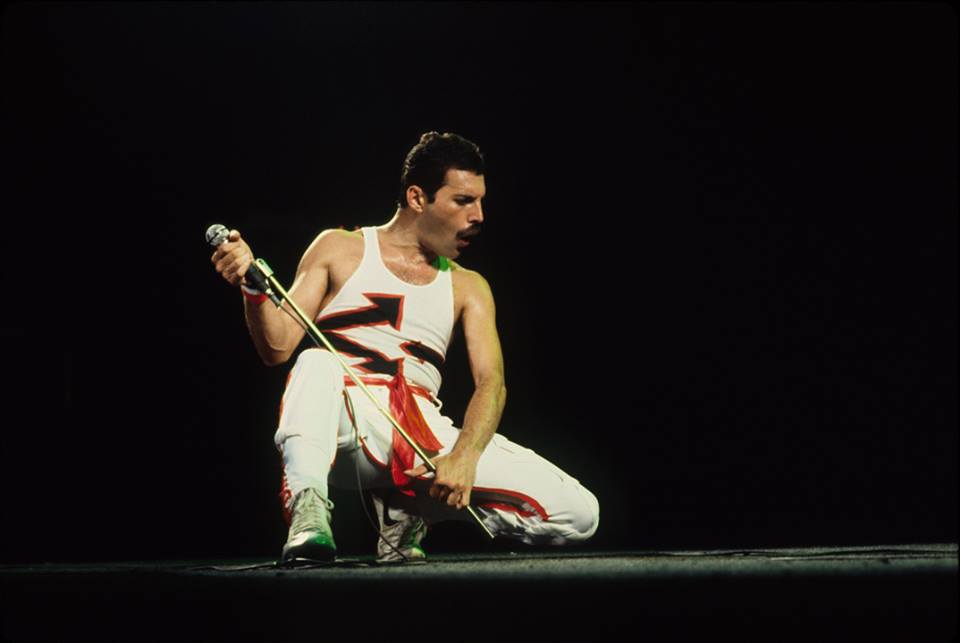- Beloved musician remembered ahead of what would have been his 70th Birthday -
- Freddie Mercury’s sister unveiled the plaque alongside Queen guitarist Brian May -
English Heritage celebrated the life and career of Freddie Mercury today (1 September 2016) with a blue plaque at the singer and songwriter’s first home in England, a modest, inter-war terrace house in Feltham, West London. Freddie’s parents bought the house in 1964 after the family left Zanzibar for the UK and Freddie was still living there when he first met his future Queen band mates, Brian May and Roger Taylor. Other musicians to be honoured with English Heritage Blue Plaques include Freddie’s idol, Jimi Hendrix, John Lennon, and Wolfgang Amadeus Mozart.
Freddie Mercury’s sister, Kashmira Cooke, unveiled the English Heritage Blue Plaque and said: "Mum and I are so proud and pleased that English Heritage is honouring our Freddie with a Blue Plaque, and that he will be amongst other famous names for ever. Secretly he would have been very proud and pleased too."
Freddie’s parents, Jer and Bomi Bulsara, chose Feltham as Jer already had a sister living in the area and the family moved into number 22 Gladstone Avenue in autumn 1964. Seventeen year old Freddie took an A-level in art at Isleworth Polytechnic followed by a Diploma in Graphic Art and Design at Ealing College of Art, supporting himself with a variety of jobs, including washing dishes in the kitchens at nearby Heathrow Airport. It was while studying at Ealing that Freddie met future Queen guitarist Brian May and drummer Roger Taylor.
Kashmira recalls how while living on Gladstone Avenue, her brother was always sketching for his college art work – sometimes calling on her to model for him – or tapping his fingers and humming as if thinking of his next song. A natural musician, Gladstone Avenue was where Freddie really began to explore his musical talent, listening to the likes of Cream and his hero, Jimi Hendrix in his bedroom at the back of the house; there is a 1968 photograph of Freddie in his bedroom posing in the manner of Hendrix with a borrowed Fender Stratocaster. Kashmira also remembers how he loved watching Tom & Jerry cartoons and collecting cuttings of Andy Capp comic strips from the daily newspaper and how he spent hours grooming his hair – much to her annoyance as the house had only one bathroom.
Dr Brian May said: “It is a pleasant duty to help install this little reminder on Freddie’s parents’ house in Feltham. It was here that I first visited Freddie soon after we had met through a mutual friend. We spent most of the day appreciating and analysing in intimate detail the way that Jimi Hendrix had put his recordings together in the studio - listening to Hendrix on vinyl played on Freddie's Dansette record player - which had stereo speakers on opposite sides of the box! Feltham was the childhood neighbourhood for both of us but we never knew it until we met in the cause of music.”
Sir Peter Bazalgette, English Heritage Blue Plaques Panel Member, said: “Before Freddie became Freddie Mercury, this small house was where he lived and took the first steps towards stardom. English Heritage’s blue plaques celebrate the great men and women whose achievements endure and Freddie Mercury – singer, songwriter and producer – was certainly one of our greatest musical talents. He was truly a champion.”
Attending the unveiling, the Rt Hon Karen Bradley MP, Secretary of State for Culture, said: “Freddie Mercury is a global icon whose music touched the lives of millions of people around the world. I am delighted that one of Britain's most influential musicians will be recognised through the Blue Plaque Scheme - a small but important reminder to people of the impact he had both in London and well beyond.”
Freddie Mercury’s charisma, unfailing talent and commanding stage presence established him as one of our all-time greatest musicians; when Mercury performed audiences were captivated. English Heritage is delighted to commemorate his life and legacy with a blue plaque in a year that would not only have seen his 70th birthday but one that also sadly marks the 25th anniversary of his death, on 24 November 1991.

